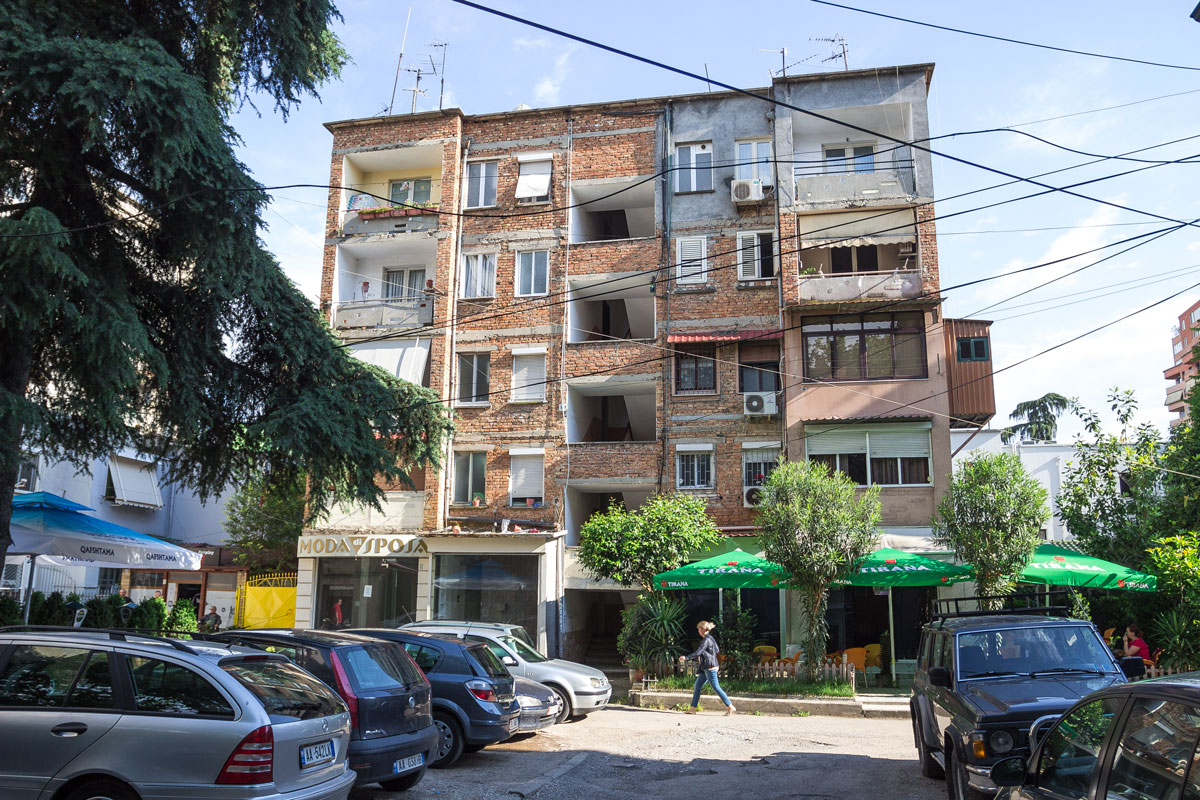Tirana
Tirana is the capital of Albania. A beautiful city in its charming disorder.

On one hand, the country is quite poor. Tirana could be like a provincial city in Russia, for example, Ryazan, but not the capital of the country. However, it’s like that everywhere in the Balkans.

On the other hand, in Tirana, sometimes appear very colorful scenes.



Albanians really love hanging awnings on their balconies. Even the most ancient house is adorned with beautiful canopies that protect the apartments from the sun.

Streets.




Albanians.


Albanian women. Under the hijabs of Albanian Muslim women, “Converse” sneakers can be seen peeking out.


Graffiti.


The traffic light poles in the city center are equipped with LED strips.


The same goes for cars as well.

All of Tirana is engaged in trade. Countless shops can be found everywhere in the city, cluttered with various junk, clothes, toys. On the sidewalks, market stalls with vegetables and fruits are often set up, as well as food carts.


Shops are usually located on the ground floor, with a staircase leading down from the sidewalk.

Alternatively, they open on the first floor if the building’s structure allows for it.

Of course, in Albania, you can’t take a step without encountering something related to football.


Those were the central districts of Tirana, and they are quite clean. In the rest of the city, however, the landscapes sometimes resemble Nepal.

Inner courtyards.


Albania is a record holder in self-construction. In Tirana, the number of homemade terraces, balconies, and pieces of apartments attached to buildings is off the charts.

A horrifying sight. All these protruding balconies are self-constructed.

Beauty. A makeshift addition on top of a historical building, reminiscent of Vietnam.

Tuborg.

Sometimes the extensions are not bad at all, especially if they are covered with an awning.

To every house in Tirana, a web of electrical wires stretches, with the wires running directly from the nearest lampposts into the apartment. It is not customary here to pay for electricity.


Many houses are in a dilapidated state.


Most entrances have little to no glazing or covering, with staircases directly leading to the street. In Albania, of course, it is warm for most of the year, but there are also freezing temperatures at times.

Entrance to one of the buildings.

Some slums.

Chaos.

The scariest thing is when these slums merge with the market. When slums are separate, it’s still tolerable. When the market is in the center, it’s not so bad either. But when the market is within the slums, that’s when the country turns into India.


Apart from such disparities, overall, the layout of Tirana strongly resembles the Soviet one, but with a Balkan-Indian flair, beautiful awnings, spontaneous self-construction, and a multitude of shops selling miscellaneous goods.
Despite being located close to Serbia, Albania never became part of Yugoslavia and did not engage in destructive wars for independence from it. However, the influence of socialism reached this country as well.
It’s hard to imagine now, but in the mid-20th century, Albania was one of the most closed countries in the world, where even tourist visas were rarely issued. The leader of the country at that time was Enver Hoxha, a staunch Albanian Stalinist who attempted to build the country in the image and likeness of the USSR.
It is unlikely that anything interesting can be said about him. Besides the overall urban planning of Tirana, this period left only a few gray relics.
Beautiful North Korean mosaic on the building of the National Museum.

A horrifying opera building. How could one construct an opera house in such a style?

But the most prominent relic of socialism is the Tirana Pyramid. It is a former museum entirely dedicated to Enver Hoxha and built by his daughter. Locals sometimes refer to it as a mausoleum. I would rather call it a ziggurat.

You can climb this mountain of concrete without anyone seeing. Just be careful: going headfirst down the flat slabs is a piece of cake.

From the ziggurat, you can see all of Tirana quite well.



⁂
The Balkans are a patchwork quilt of many countries. It’s impossible to tour them all at once. The first Balkan journey is coming to an end, but we will definitely come back here again and visit Serbia, Macedonia, and Kosovo.
Goodbye, Albania.



